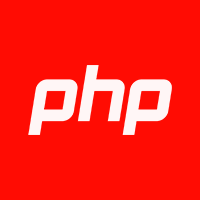-

- C#的序列化技术如何保存桌面应用数据?
- 答案:C#序列化通过将对象转为可存储或传输的格式来保存桌面应用数据,常用技术包括XmlSerializer、System.Text.Json、Newtonsoft.Json、DataContractSerializer和BinaryFormatter,各自适用于不同场景。System.Text.Json因性能好、轻量且为官方推荐,适合现代应用;Newtonsoft.Json功能强大,适合复杂JSON处理;XmlSerializer适合需XML兼容的场景;DataContractSerialize
- C#.Net教程 . 后端开发 898 2025-09-14 08:16:01
-

- C#的模式匹配是什么?如何使用?
- C#的模式匹配通过is表达式和switch表达式,结合类型、属性、关系、列表等多种模式,统一实现数据检查与提取,显著简化多态处理、对象验证和条件分支,提升代码可读性与维护性。
- C#.Net教程 . 后端开发 811 2025-09-14 08:12:01
-

- ASP.NET Core中的主机配置是什么?如何设置?
- ASP.NETCore主机配置的核心组成部分包括IHostBuilder/IWebHostBuilder、Kestrel服务器、配置提供程序、日志系统和环境管理。IHostBuilder是应用启动的入口,负责构建主机并集成Web配置;通过ConfigureWebHostDefaults可配置Kestrel服务器,设置监听地址、端口及HTTPS等。Kestrel作为默认内置的跨平台高性能服务器,直接处理HTTP请求,是Web应用运行的基础。配置系统支持多源加载,如appsettings.json、
- C#.Net教程 . 后端开发 634 2025-09-14 08:00:01
-

- C#的日志框架NLog怎么集成到桌面端?
- 集成NLog到C#桌面应用需三步:先通过NuGet安装NLog包,再创建并配置NLog.config文件定义日志目标与规则,最后在代码中使用LogManager获取Logger实例记录日志,并在应用关闭时调用LogManager.Shutdown()确保日志完整写入。
- C#.Net教程 . 后端开发 1040 2025-09-13 09:03:01
-

- C#的元组类型在桌面开发中怎么用?
- 元组在C#桌面开发中是处理临时数据和多值返回的高效工具,尤其适用于方法返回多个值、事件参数传递和UI状态管理等场景。它避免了为简单数据组合创建额外类的冗余,简化了代码结构,提升了可读性和开发效率。在WPF或WinForms中,元组可用于封装用户信息、选择状态或操作结果,并通过解构赋值直接更新UI。对于错误处理,元组支持实现结果模式,返回数据与错误消息并存的轻量结构,避免异常开销,强制调用方处理可能的失败。当数据具有临时性、低复杂度且不涉及行为封装时,优先使用元组;而核心业务实体、公共API或需继
- C#.Net教程 . 后端开发 863 2025-09-13 08:55:01
-

- C#的并行编程在桌面端有哪些注意事项?
- 答案:避免UI卡顿需将耗时操作移至后台线程,利用async/await配合Task.Run实现异步执行,并通过同步上下文或Dispatcher安全更新UI,同时合理使用线程安全结构和锁机制防止数据竞争,在确保任务粒度适中的前提下发挥多核性能。
- C#.Net教程 . 后端开发 749 2025-09-13 08:54:01
-

- ASP.NET Core中的健康检查是什么?如何配置?
- ASP.NETCore健康检查用于判断应用及依赖服务是否可正常处理请求,而不仅仅是进程是否运行。通过AddHealthChecks()注册服务,可添加数据库、URL等检查项,并支持自定义检查逻辑。利用MapHealthChecks()将终结点映射到HTTP管道,实现Liveness和Readiness探针区分。通过标签和自定义ResponseWriter可为不同环境定制报告,避免暴露敏感信息。需注意避免检查本身成为性能瓶颈、设置合理超时与缓存、防止假阳性/阴性、限制访问权限,并聚焦关键依赖,确保
- C#.Net教程 . 后端开发 1013 2025-09-13 08:44:01
-

- C#的Attribute在桌面开发中有哪些用途?
- C#中的Attribute是一种为代码添加元数据的机制,可用于增强设计时体验、数据绑定验证、序列化控制、AOP和权限管理。通过在类、方法等元素上标记Attribute,可在不修改逻辑的情况下实现配置分类、自动验证、日志记录、权限检查等功能。结合反射或AOP框架,Attribute能驱动运行时行为,提升代码可读性与维护性。开发时应避免滥用,注意性能与类型安全,遵循职责单一、合理使用AttributeUsage、缓存反射结果等最佳实践。
- C#.Net教程 . 后端开发 810 2025-09-13 08:43:01
-

- C#的Entity Framework如何实现数据库操作?
- EntityFrameworkCore是一个ORM工具,用于简化C#中的数据库操作。1.它通过将数据库表映射为C#类(实体)来实现数据访问,支持CodeFirst和DatabaseFirst两种模式,开发者需创建继承DbContext的上下文类并定义DbSet属性。2.迁移(Migrations)用于管理数据库架构变更,通过dotnetefmigrationsadd创建迁移,dotnetefdatabaseupdate应用迁移,实现数据库结构的版本控制。3.性能优化包括:使用AsNoTracki
- C#.Net教程 . 后端开发 146 2025-09-13 08:42:02
-

- WPF中的模板选择器TemplateSelector怎么用?
- WPF中的TemplateSelector通过在运行时根据数据对象动态选择DataTemplate,提升了UI的灵活性和可维护性。它解耦了数据与视图逻辑,支持复杂业务判断,便于代码复用,并使UI结构更清晰。实现时需定义DataTemplate、创建继承DataTemplateSelector的类并重写SelectTemplate方法,结合属性绑定和XAML资源引用。相比基于DataType的隐式模板、DataTrigger或Converter等纯XAML方案,TemplateSelector更适
- C#.Net教程 . 后端开发 707 2025-09-13 08:32:01
-

- WPF中的用户控件如何创建与使用?
- WPF用户控件是UI与逻辑的封装单元,通过继承UserControl将常用界面元素组合复用;创建时添加.xaml和.xaml.cs文件,在XAML中定义界面布局,后台代码中定义依赖属性(如ButtonText、ButtonCommand)以支持数据绑定和命令传递;使用时在父窗体引入命名空间后直接实例化控件并设置属性或绑定数据;其与自定义控件的核心区别在于:用户控件侧重组合现有控件、适合固定结构的模块化封装,而自定义控件继承自Control,无默认外观,依赖ControlTemplate实现高度可
- C#.Net教程 . 后端开发 520 2025-09-13 08:11:01
-

- .NET的AssemblyDescriptionAttribute类如何添加描述信息?
- 在.NET中添加描述信息需使用AssemblyDescriptionAttribute特性,经典项目在AssemblyInfo.cs中添加,现代SDK风格项目则在.csproj的标签中定义,编译后可在文件属性中查看。
- C#.Net教程 . 后端开发 766 2025-09-13 08:05:01
-

- WPF中如何实现文本的模糊搜索功能?
- 选择合适的模糊匹配算法需根据需求权衡精度与性能,如Contains适用于简单匹配,Levenshtein距离或N-Gram适用于高精度场景;处理大量数据时可通过索引、分页、异步和延迟搜索优化性能;在WPF中结合ViewModel与ObservableCollection实现数据绑定,利用TextChanged事件触发延迟搜索并实时更新UI,确保流畅用户体验。
- C#.Net教程 . 后端开发 771 2025-09-13 08:02:01
-

- WinForms的TableLayoutPanel布局技巧有哪些?
- 答案:TableLayoutPanel通过RowStyles和ColumnStyles的SizeType(Absolute、AutoSize、Percent)实现自适应布局,结合控件的Dock和Anchor属性控制填充与定位,利用SuspendLayout/ResumeLayout优化动态添加或移除控件时的性能与布局刷新,合理设置跨行跨列及边距确保UI整洁稳定。
- C#.Net教程 . 后端开发 870 2025-09-12 08:33:01
-

- ASP.NET Core中的模型验证是什么?如何实现?
- 答案:ASP.NETCore模型验证通过数据注解、自定义验证属性、IValidatableObject接口和远程验证实现,结合ModelState.IsValid在控制器中验证数据,并在API中返回BadRequest(ModelState)以提供错误详情,同时支持客户端验证以提升用户体验。
- C#.Net教程 . 后端开发 226 2025-09-12 08:30:03

PHP讨论组
组员:3305人话题:1500
PHP一种被广泛应用的开放源代码的多用途脚本语言,和其他技术相比,php本身开源免费; 可以将程序嵌入于HTML中去执行, 执行效率比完全生成htmL标记的CGI要高许多,它运行在服务器端,消耗的系统资源相当少,具有跨平台强、效率高的特性,而且php支持几乎所有流行的数据库以及操作系统,最重要的是




























